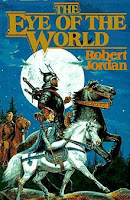And now for something completely different....
It's the greatest rock and roll battle in history! Two super powers collide: The Beatles, led by ace songwriter, John Lennon, pitted against The Rolling Stones, captained by rock renegade and surprisingly good dancer, Mick Jagger. It's the ultimate showdown, a clash of titans where only one can emerge supreme. Today we answer the most important question in history: who is the greatest rock and roll band of all time!
But first, a pre-game show presented by The Rolling Stones.
Songwriting
This incredibly subjective battle is underway! The Stones gain ground first with sheer driving beats and to-the-roots rock simplicity. The Beatles, however, fight back with cutting edge experimentation complexity. The overall winner of this match-up, however, has to go to... The Beatles! According to number of recording artists adopting and producing their songs for their own (an undeniable sign of professional respect and admiration) The Beatles have five of the top 10 most covered songs in history. The Stones have only one.
Score: Beatles 7 Rolling Stones 0
Longevity
Though the Beatles had a meteoric rise to fame of unprecedented dimensions, there is no doubt their career burned brightly but briefly. Even reaching back to the earliest days as an unknown band of mere kids in Liverpool and Hamburg clubs in the early sixties, The Beatles survived less than a decade until their very public breakup in 1970. The Rolling Stones on the other hand are still rocking today, setting records in the mid 1990's for highest grossing tours of all time and playing at Super Bowl XL in 2006.
Score: Beatles 7 Rolling Stones 7
Let's take a timeout. It's time for the halftime show, brought to you by The Beatles on the Ed Sullivan Show in 1964 (one of the most watched moments in American television history)
Album sales
The Rolling Stones have been a powerhouse on the international music scene for decades, selling an estimated 200 million albums worldwide! The Beatles, however, have absolutely crushed that. As the greatest selling musical act of all time, they have sold an estimated 600 million albums. Sorry Stones! The Beatles win this round.
Score: Beatles 14 Rolling Stones 7
The Heart of Rock and Roll
Rock and roll is a thinly defined genre. Artists spanning the spectrum all the way from Elvis Presley to Marilyn Manson have fallen under the umbrella term of "rock." Jack Black provides a workable definition of rock and roll in the movie School of Rock, positing the necessity of "sticking it to the man." This notion implies the need for rebellion, counterculture and subversiveness to qualify for the genre. Historically the idea of rebellion has persevered across the rock spectrum, taken to its logical extreme with Punk and Alternative Rock in the 1970s, 80s and 90s.
That all being established, there is no doubt that with album titles like "Let it Bleed," "Sticky Fingers" and "Exile on Main Street," The Rolling Stones embraced and embodied the notion of rebellion far more than The Beatles with their "Let it Be" "Help" and "Abbey Road." Point: Stones.
Score: Beatles 14 Stones 14
Number One Hits
The Rolling Stones have had eight number one hits on the U.S. Billboard Top 100 charts, an impressive feat not matched by many in the history of Billboard Top 100. However, as with album sales, The Rolling Stones were vastly eclipsed by The Beatles, who hold the all-time record with 20 number one hits. Say what you will, but this has to be gauge factor in measuring something as subjective as "greatness."
Score: Beatles 21 Rolling Stones 14
And that's it! The final whistle has blown. Though The Rolling Stones deserve to be touted as one of the great rock and roll bands in history, there is no question that The Beatles have won this Rock and Roll Super Bowl. What an event! What a match! The age-old question has finally been answered: The Beatles are the greatest rock and roll band of all time!
Final Score
THE BEATLES 21
THE ROLLING STONES 14
Surely, you have a different opinion. I want to hear it! Maybe you can argue the Stones were greater. Or maybe another band. Comment below. You don't even have to sign up. You can even comment as anonymous if you want. However, if add your name and a hyperlink to your own website you will have yet another place in this crazy thing called the internet that connects back to you! Search engine web crawlers use such hyperlinks to give your website a score and thus a better search rating.
Final Word
John Lennon talks about The Rolling Stones and what he viewed was their tendency to imitate The Beatles:
If you enjoyed this apparently random post, consider signing up for my mailing list. I blog about all sorts of crazy, educational, entertaining, and occasionally funny topics from what makes an effective first paragraph in a novel to giant redwoods, medieval sailboats, the ancient Mayans and more. If you do sign up, you will get a once-a-week update on my posts and NOTHING ELSE! No spam, no selling your your email to third parties. Okay, if I ever get around to publishing one of these numerous books I've been working on for years, I might send out an email letting you know. In the meantime thanks for reading.
















